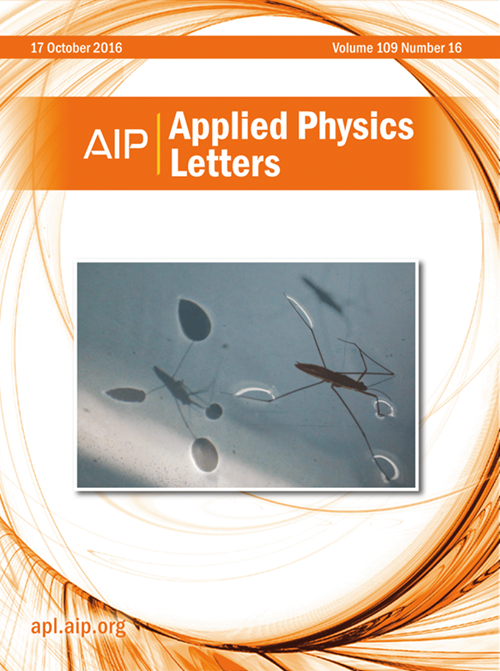Noninvasive in vivo imaging of brain specific absorption rate using thermoacoustic tomography
IF 3.5
2区 物理与天体物理
Q2 PHYSICS, APPLIED
引用次数: 0
Abstract
Electromagnetic field-based diagnostic and therapeutic techniques are gradually becoming widespread in brain disease applications, but their associated safety assessment techniques still have limitations. Specific absorption rate (SAR), as a key parameter to measure the degree of tissue absorption of electromagnetic energy, and its accurate measurement is of great significance to guarantee the safety of electromagnetic diagnostic techniques. However, current dosimetry assessment system and magnetic resonance imaging (MRI) methods, which reflect SAR by measuring temperature rise, both face challenges in realizing noninvasive, accurate, and in vivo SAR mapping. In this work, a three-dimensional (3D) thermoacoustic imaging (3D-TAT) technique is proposed to perform noninvasive SAR measurements of deep tissues with hundred-micron accuracy by using passive ultrasound as an information carrier of the temperature rise of the tissues after absorbing the electromagnetic wave energy. The accuracy of SAR measurements with 3D-TAT is validated in a water pipe model, and its potential application in complex biological tissues is demonstrated in a mouse brain model. 3D-TAT provides a technological path for safety monitoring of electromagnetic techniques such as high-field strength magnetic resonance imaging (MRI) and microwave thermotherapy, which has a wide range of clinical and scientific applications.利用热声断层成像技术进行脑特异性吸收率的无创体内成像
基于电磁场的诊断和治疗技术在脑部疾病的应用日益广泛,但其相关的安全性评估技术仍然存在局限性。比吸收率(SAR)作为衡量组织对电磁能量吸收程度的关键参数,其准确测量对保证电磁诊断技术的安全性具有重要意义。然而,目前的剂量学评估系统和磁共振成像(MRI)方法通过测量温升来反映SAR,在实现无创、准确和体内的SAR测绘方面都面临挑战。在这项工作中,提出了一种三维(3D)热声成像(3D- tat)技术,利用被动超声作为吸收电磁波能量后组织温升的信息载体,对深层组织进行百微米精度的无创SAR测量。在水管模型中验证了3D-TAT SAR测量的准确性,并在小鼠脑模型中证明了其在复杂生物组织中的潜在应用。3D-TAT为高场强磁共振成像(MRI)和微波热疗等电磁技术的安全监测提供了技术途径,具有广泛的临床和科学应用。
本文章由计算机程序翻译,如有差异,请以英文原文为准。
求助全文
约1分钟内获得全文
求助全文
来源期刊

Applied Physics Letters
物理-物理:应用
CiteScore
6.40
自引率
10.00%
发文量
1821
审稿时长
1.6 months
期刊介绍:
Applied Physics Letters (APL) features concise, up-to-date reports on significant new findings in applied physics. Emphasizing rapid dissemination of key data and new physical insights, APL offers prompt publication of new experimental and theoretical papers reporting applications of physics phenomena to all branches of science, engineering, and modern technology.
In addition to regular articles, the journal also publishes invited Fast Track, Perspectives, and in-depth Editorials which report on cutting-edge areas in applied physics.
APL Perspectives are forward-looking invited letters which highlight recent developments or discoveries. Emphasis is placed on very recent developments, potentially disruptive technologies, open questions and possible solutions. They also include a mini-roadmap detailing where the community should direct efforts in order for the phenomena to be viable for application and the challenges associated with meeting that performance threshold. Perspectives are characterized by personal viewpoints and opinions of recognized experts in the field.
Fast Track articles are invited original research articles that report results that are particularly novel and important or provide a significant advancement in an emerging field. Because of the urgency and scientific importance of the work, the peer review process is accelerated. If, during the review process, it becomes apparent that the paper does not meet the Fast Track criterion, it is returned to a normal track.
 求助内容:
求助内容: 应助结果提醒方式:
应助结果提醒方式:


